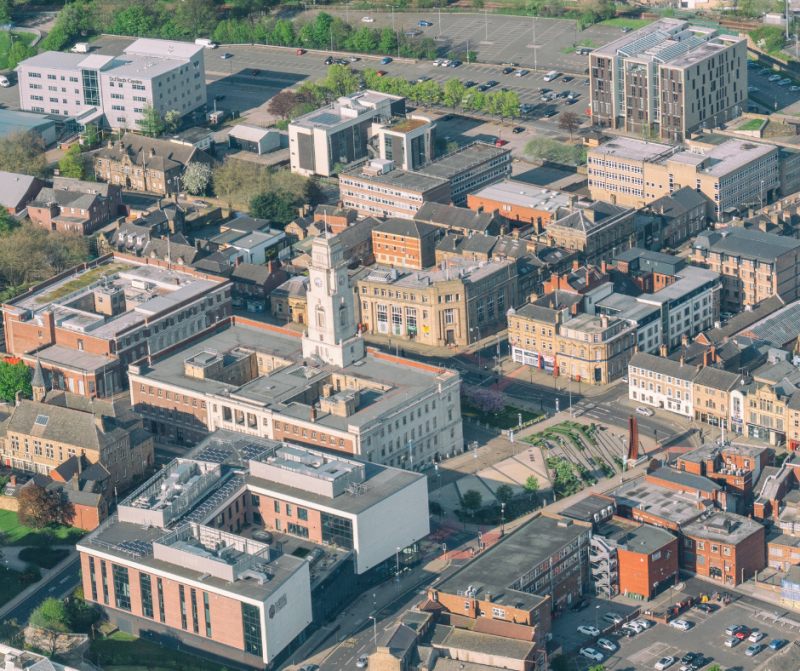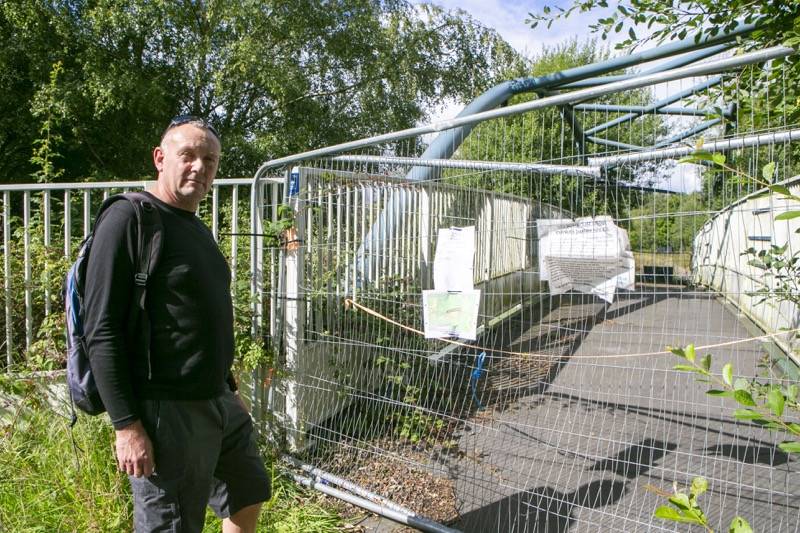‘UNACCEPTABLE’ delays in reopening a rotting footbridge – which has diverted walkers, cyclists and horse riders across a notorious speeding hotspot – must be put right due to safety concerns, a councillor has urged.
Bullhouse Bridge, which carries the Trans Pennine Trail across the A628, has been closed since last May due to issues found with its structural stability.
Although it was first brought in as a temporary measure while its panels and decking boards were replaced, the bridge is still closed and Barnsley Council bosses said ‘no definitive date’ can be provided for its reopening.
The Chronicle can reveal that a total of £24,000 has been secured through Section 106 funding – cash set aside by developers in Barnsley to compensate for loss of amenity to improve local areas – but costs have rocketed.
However, it is the safety aspect which has irked councillors, as the bridge’s closure means people have to cross the A628.
Coun David Greenhough, who represents the Penistone West ward, urged the council to treat the matter as a ‘priority’.
“This is a well-used bridge on the Trans Pennine Trail so we’re keen to see this issued solved as soon as possible,” he said.
“It’s taking forever and a day to rectify – there has to be urgency because of the lack of safety.
“It’s all well and good closing a bridge because it’s in no state to carry users, but to ask horse riders, cyclists and walkers – many of which include children – to peer out and cross the road is unacceptable.
“The council’s had more than a year now – it’s a dangerous delay and we’re keen this is prioritised.”
To help with safety an emergency speed reduction for vehicles on Manchester Road – either side of the bridge – was enforced by the council, which cut the limit from 60mph to 40mph.
Coun James Higginbottom, cabinet spokesperson for environment and highways, added: “We’re unable to provide a definitive date on when the reopening can take place as this will be influenced by a number of factors, some of which are outside the council’s control.
“The overlay surfacing panels give the impression that the deck is in okay condition, but the load-bearing plywood deck panels underneath are rotting at the joints and have failed in multiple areas across the deck.
“The plywood deck is not safe for people to cross.
“We’ve considered several options for the replacement of the plywood deck, including a like-for-like plywood deck replacement that has a 15-year lifespan, and a composite bridge deck that has a 50-year lifespan.”
However, delays have been blamed on finding a suitable company.
“Not many companies provide both the materials and carry out installation so they can pick and choose which jobs they estimate for,” Coun Higginbottom added.
“We’ve been trying to find companies that have availability so we can then go out to procurement.
“We want to have the same company supply and fit, to make sure we have a seamless process for getting the work completed.
“This is not a challenge unique to Bullhouse Bridge – it’s becoming increasingly common in areas that need highly specialised engineering expertise, particularly in the current economic climate.
“Costs have come back significantly higher than originally estimated, so we’re looking at how we can secure other sources of funding.
“We all want the bridge to be reopened, and I would like to thank ward members and regular users of the bridge for their continued patience throughout this process.”


















